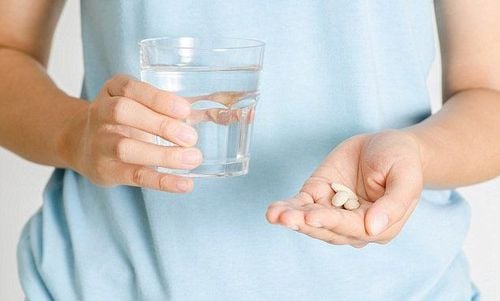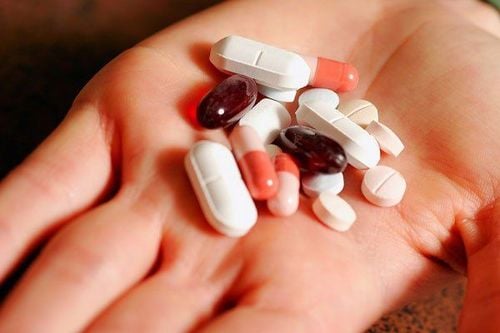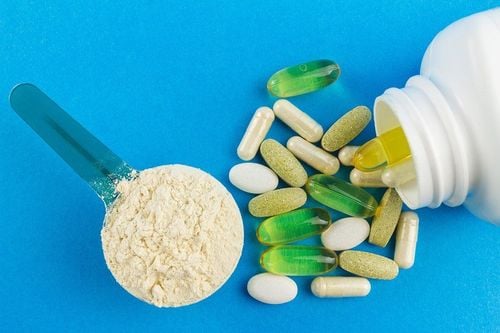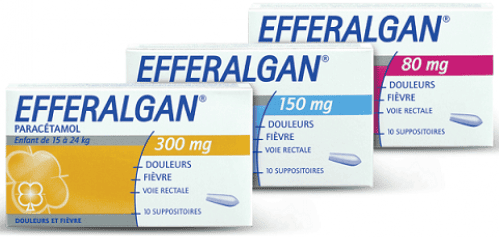This is an automatically translated article.
Glucosamine is a naturally occurring sugar found in the cushioning tissue of joints. Glucosamine is widely used to support primary or secondary osteoarthritis, acute or chronic arthritis and a number of other conditions.1. What is Glucosamine?
Glucosamine is a naturally occurring sugar found in and around the fluid and cushioning tissues of joints. Glucosamine is also found in the hard shells of shellfish.Glucosamine in dietary supplements is usually extracted from shellfish. There are different forms of glucosamine including glucosamine sulfate, glucosamine hydrochloride and N-acetyl glucosamine. Glucosamine has been used medicinally to relieve joint pain, swelling, and stiffness caused by arthritis.
2. Uses of glucosamine
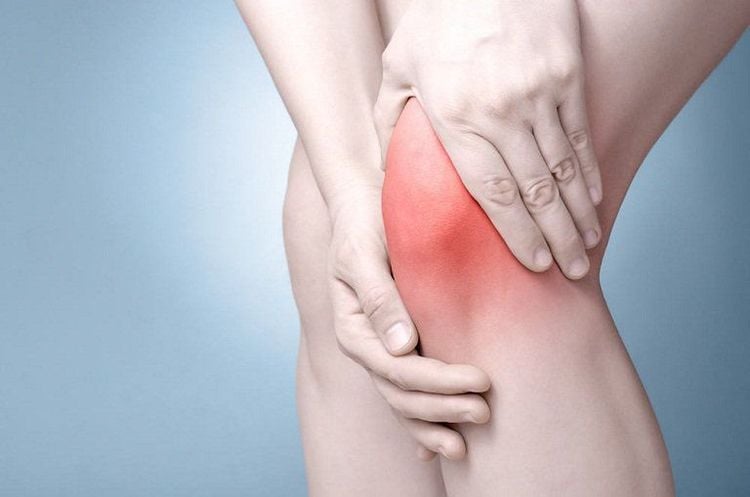
Sử dụng glucosamine sulfate đường uống có thể giúp giảm đau cho những người bị viêm xương khớp đầu gối, hông hoặc cột sống
Interstitial Cystitis : Glucosamine is promoted as a treatment for interstitial cystitis (IC), a condition associated with a deficiency glycosaminoglycans. Since glucosamine is a precursor to this compound, it is hypothesized that glucosamine supplementation may help manage IC. However, there is currently no reliable scientific data to support this theory. Inflammatory bowel disease (IBD): Like interstitial cystitis, inflammatory bowel disease (IBD) is associated with glycosaminoglycan deficiency. One study in mice with IBD indicated that glucosamine supplementation was able to reduce inflammation. Multiple Sclerosis (MS): One study evaluated the effectiveness of using glucosamine sulfate along with traditional therapy for the treatment of relapsing MS. Results showed no significant impact on relapse rate or disease progression with glucosamine use. Glaucoma: Glaucoma is thought to be treatable with glucosamine. Some early research indicates that glucosamine sulfate may promote eye health through reduced inflammation and antioxidant effects in the retina. In contrast, one small study indicates that excessive amounts of glucosamine can be harmful for people with glaucoma. Temporomandibular joint inflammation (TMJ): One small study found that taking a combination of glucosamine sulfate and chondroitin significantly reduced markers of pain and inflammation, as well as increased jaw mobility.
3. Dosage of glucosamine
The dose of glucosamine is usually 1,500 mg per day. Supplemental glucosamine is obtained from natural sources — such as seashells or mushrooms — or artificially produced in a laboratory. Glucosamine supplements are available in two forms, glucosamine sulfate and glucosamine hydrochloride. Most scientific data show the greatest effect for glucosamine sulfate or glucosamine sulfate in combination with chondroitin. Glucosamine needs to be used continuously for 2-3 months, repeated treatment every 6 months or shorter depending on the condition of the disease.4. What are the side effects of glucosamine?

Táo bón là một trong những tác dụng phụ của Glucosamine
Constipation Diarrhea Drowsiness Headache Heartburn Nausea Rash. In addition, glucosamine can affect blood sugar and insulin levels. Therefore, patients with diabetes should consult their doctor before taking glucosamine.
Animal studies show that glucosamine can further increase levels of "bad" LDL cholesterol. Glucosamine may interfere with some medicines such as heart medicines, anticoagulants, antipyretics and pain relievers paracetamol, statins to treat hyperlipidemia,... Glucosamine may increase the absorption of tetracyclines in the stomach - intestines, can reduce the effectiveness of antipyretics, analgesics, paracetamol, statins... should avoid taking glucosamine at the same time with these drugs Pregnant or lactating women, children , adolescents under 18 years of age should not take glucosamine because there are insufficient data on safety and efficacy.
Please dial HOTLINE for more information or register for an appointment HERE. Download MyVinmec app to make appointments faster and to manage your bookings easily.
Articles refer to sources: healthline.com, mayoclinic.org, drugs.com



